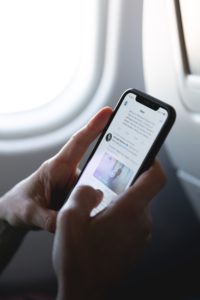In 2016, Lazarus, a notorious hacking group, aimed to steal a billion dollars through the SWIFT interbank communication system. How did the group do it? Social engineering.
Lazarus Group members were from North Korea. Its hackers, given the limited access to computing, aren’t the best. Russia’s are. They have developed some of the most potent malware we have seen yet. And if China were to team up with Russia, and there is evidence it is likely to, then we are in for some increasingly brazen attacks.
For context, every major hack in the past decade has origins in one of these nations. Russian hackers slipped malicious code into SolarWinds’ Orion program and got access to the Pentagon and the Cybersecurity and Infrastructure Security Agency (CISA), the DHS office responsible for protecting federal networks. Most ransomware also has roots in Russia. Estimates are that one in three organizations globally is a victim of these attacks, and they are enormously lucrative for hackers. Last year, the meat packer JBS paid $11 million in ransom; Colonial Pipeline paid $5 million. Some of it was recovered, but all of us paid through increased prices. And almost all of this involved social engineering.
Add to this the hacking prowess of China. Data stolen from sources as varied as from the Office of Personnel Management (OPM) to every major retailer can be traced to China. According to reports, sophisticated mining operations there are helping Russians craft highly persuasive social engineering attacks.

Photo by Gayatri Malhotra on Unsplash
Growing Russian Hacker Threat
Once isolated and removed from banking systems such as SWIFT, it’s a question of time until Russia turns more sharply toward hacking. And if the country’s currency implodes further and it no longer cares about the rules-based global economy, there will be no way to hold it to account and disruptions will increase. We will end up paying through ransom payments, supply shortages, and higher prices. We have to stop this at its source by protecting users — all of us — the primary conduit through which malware gets into organizations.
While at long last two major cybersecurity bills mandating ransomware reporting are being considered by Congress, the defense of users is still being ignored. That’s because our cybersecurity defense relies on technology vendors. The tech sector’s motivation is to develop more technology. We today have more proprietary technology, with more licenses being sold, than ever before. Bank of America, which a decade ago was spending $400 million on cybersecurity, is now spending a billion dollars. And after all that, thousands of the bank’s California customers’ were still hacked last year.
How Do We Prevent Cyberattacks?
We need to change this paradigm. We need to invest in open source tools that are developed through private-public partnerships and make licenses available free of charge for at least the first five years to all organizations. This way, they can be applied widely, openly tested, and their value in organizational security can be ascertained.
The same extends to user training — one of the most widely applied, proactive cybersecurity solutions against spear-phishing. Almost all training today left to vendors, which offer many fee-based training programs. But how good is any of this? There is little data from cybersecurity firms on their effectiveness. The withholding of data has covered inefficiencies in training, which research studies repeatedly point out, and is extremely dangerous because the training programs give organizations a false sense of readiness.
Audits Are Needed
We need audits of organizational training, conducted by independent groups that aren’t motivated by the possibility of selling something more. CISA could set up such a team in the federal government that demonstrates how this can be accomplished. This can serve as a blueprint for IT managers in organizations, who are naturally risk-averse and less inclined to allow anyone to peer into their performance.
Finally, we need to get our netizens prepared for what’s coming. Like the civil defense drills we performed in the 1970s, we need to have cybersecurity drills that make everyone adept at dealing with social engineering. Everyone should have access to free security training and open source backup and threat-detection tools. Organizations should make multifactor authentication the default on all online services. The same goes for credit and identity protection. All of our credit should be locked by default, and credit monitoring, which is a fee-based service, should be free.
Stopping cyberattacks is no longer an option. It is an existential requirement. We may not be able to put our boots on the ground to fight the Russians, but we must ensure that neither our data nor our money help fund their war efforts.




